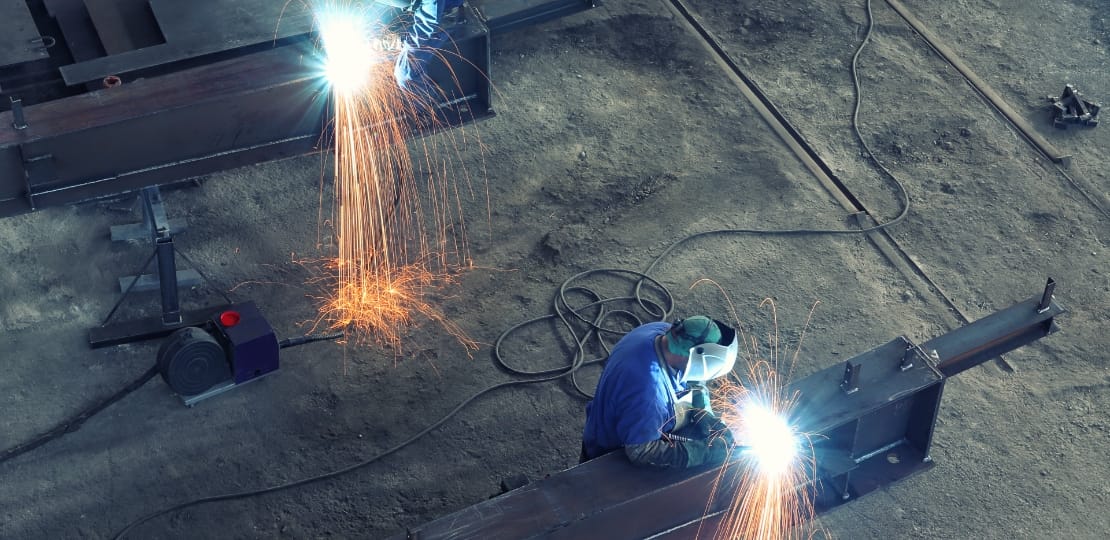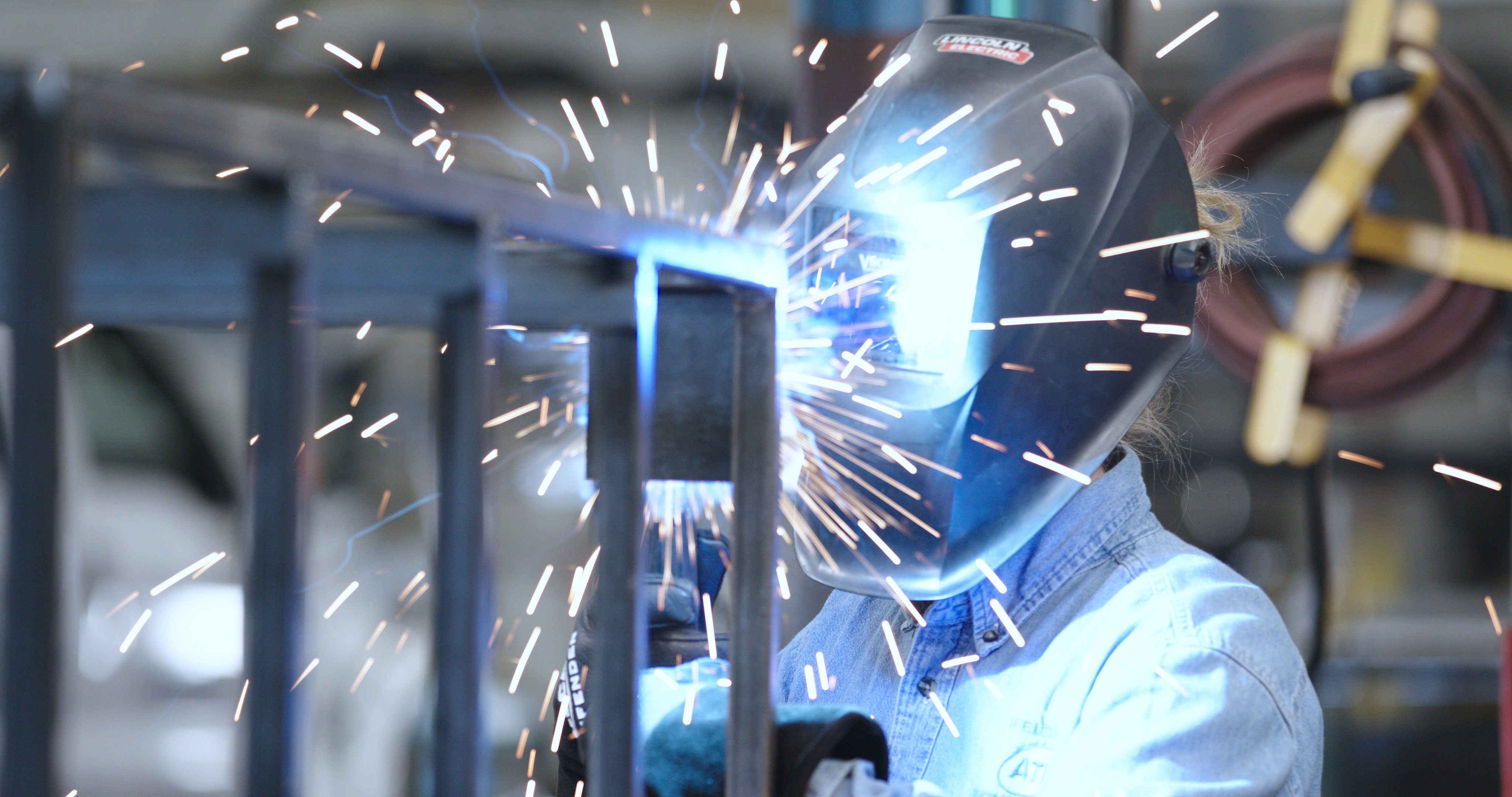Common Welding Repair Work Issues and Exactly How to Address Them Properly
Welding repairs frequently come across a variety of concerns that can endanger the integrity of the end product. Common issues include poor infiltration, porosity, and misalignment, to name a few. Each problem presents distinct difficulties that call for certain approaches for resolution. Recognizing these issues is important for welders intending to boost their abilities and results. This conversation will discover these common welding fixing issues and reliable techniques to address them.
Poor Penetration
Insufficient infiltration takes place when the weld steel fails to fully fuse with the base material, resulting in weak joints and prospective architectural failures. This problem commonly comes from not enough heat input, inaccurate electrode angle, or incorrect welding speed. Welders might experience insufficient penetration because of a mistake of the essential specifications for a specific product density or kind. Furthermore, contamination on the base product's surface can hinder efficient bonding, aggravating the problem. To resolve insufficient penetration, welders must assure ideal settings on their tools and keep a tidy work surface area. Routine assessment of welds is suggested to recognize any type of deficiencies early, enabling timely modifications and the avoidance of compromised structural honesty in welded assemblies.
Porosity
Porosity is an usual issue in welded joints that manifests as little gas bubbles entraped within the weld metal. This issue can compromise the honesty of the weld, bring about reduced stamina and prospective failure under tension. Fabrication. Porosity generally emerges from contamination, wetness, or incorrect welding strategies, which permit gases to run away into the molten weld pool. To deal with porosity, welders ought to guarantee correct surface area preparation, keep a tidy working setting, and make use of appropriate welding criteria. In addition, choosing the ideal filler product and securing gas can mitigate gas entrapment. Routine assessment and testing of welds can aid identify porosity early, assuring prompt restorative activities are taken, thereby maintaining the top quality and integrity of the welded framework
Misalignment
Misalignment in welding can arise from various elements, including inappropriate arrangement and thermal growth. Recognizing the source is vital for reliable resolution. A number of modification methods are offered to realign elements and ensure structural integrity.
Causes of Imbalance
Welding imbalance commonly comes from a selection of underlying problems that can jeopardize architectural honesty. One key cause is inappropriate fit-up of elements prior to welding, which can bring about voids and unequal surfaces. Variants in thermal expansion throughout the welding process can also cause distortion, specifically if the products being joined have various coefficients of growth. Additionally, poor fixturing and securing may stop working to hold parts firmly in position, causing activity throughout welding. Poorly conserved devices, consisting of welding makers and tools, may present variances in the weld bead, additional adding to misalignment. Finally, operator mistake, originating from inadequate training or experience, can additionally play a significant duty in developing misaligned welds.
Modification Methods Offered
Resolving misalignment effectively requires a mix of rehabilitative methods customized to the certain problems at hand. One common approach is making use of fixtures or jigs to hold components in the appropriate position during welding, ensuring constant placement. Additionally, pre-heating the products can help in reducing distortion and boost fit-up. For substantial imbalance, mechanical adjustment methods, such as making use of hydraulic jacks or clamps, can be employed to remedy the position prior to welding. Post-weld warm treatment may likewise be required to eliminate stresses triggered by imbalance. Cautious inspection and change during the arrangement phase can stop imbalance problems from becoming substantial problems, promoting a smoother welding procedure and improving overall architectural stability.
Distortion
Distortion is a typical challenge in welding that can develop from different aspects, consisting of uneven heating and cooling. Recognizing the root causes of distortion is important for implementing reliable avoidance methods. Addressing this concern not just improves structural integrity however likewise boosts the general top quality of the weld.
Sources of Distortion
When based on the extreme warmth of welding, materials usually undergo changes that can cause distortion. This sensation primarily emerges from thermal development and tightening throughout the welding procedure. As the weld location heats up, the product increases; upon cooling, it contracts, which can develop internal tensions. Additionally, irregular heating across a work surface can exacerbate these anxieties, causing warping or bending. The sort of product also plays a substantial role; steels with varying thermal conductivity and coefficients of growth might respond in different ways, bring about uncertain distortions. Moreover, poor joint design and inadequate fixturing can add to misalignment throughout welding, boosting the chance of distortion. Understanding these reasons is vital for effective welding repair and avoidance approaches.
Prevention Techniques
Effective prevention techniques for distortion throughout welding focus on regulating warm input and guaranteeing appropriate joint design. Maintaining a constant warm input helps to minimize thermal expansion click here to read and tightening, which can bring about distortion. Utilizing strategies such as preheating the work surface can also lower the temperature level gradient, promoting consistent heating. In addition, picking suitable joint styles, such as T-joints or lap joints, can improve security and reduce stress and anxiety concentrations. Carrying out proper fixturing website here to safeguard the work surfaces in area even more aids in preserving placement during the welding procedure. Finally, staggered welding sequences can disperse heat extra equally, stopping local distortion. By using these strategies, welders can significantly decrease the possibility of distortion and boost the general top quality of their welds.
Splitting
Cracking is a typical concern come across in welding fixings, frequently arising from various aspects such as incorrect cooling prices, product choice, or inadequate joint preparation. The occurrence of splits can substantially endanger the integrity of the weld, resulting in prospective failures during operation. To resolve this problem, welders need to first analyze the root causes, ensuring that materials are compatible and appropriately picked for the certain application. Furthermore, managing the cooling price during the welding procedure is vital; quick cooling can induce tension and bring about breaking. Proper joint design and preparation likewise add to minimizing the risk. Applying these methods can enhance weld quality and durability, ultimately reducing the possibility of fracturing in ended up weldments.

Insufficient Combination
A substantial concern in welding repairs is insufficient blend, which takes place when the weld metal does not sufficiently bond with the base material or previous this link weld passes - Montana Mobile Welding and Repair Fabrication. This issue can lead to weak points in the joint, possibly compromising the stability of the welded framework. Elements adding to incomplete fusion consist of inadequate warmth input, improper welding technique, and contamination of the surfaces being signed up with. To resolve this issue successfully, welders need to guarantee correct pre-weld cleansing and surface area prep work, as well as readjust their welding specifications to attain appropriate infiltration and blend. Regular examination during the welding process can also help identify incomplete combination early, permitting timely rehabilitative procedures to boost the total top quality of the weld
Overheating
While welding repairs can enhance architectural stability, overheating presents a substantial challenge that can bring about material destruction. Extreme warm throughout welding can change the mechanical buildings of metals, causing lowered toughness, raised brittleness, and bending. This phenomenon is especially critical in high-stress applications where architectural reliability is extremely important. Recognizing overheating can entail aesthetic inspections for staining or distortion, as well as keeping an eye on temperature level throughout the welding procedure. To minimize the dangers connected with getting too hot, welders ought to employ appropriate strategies, such as regulating warm input, adjusting traveling speed, and utilizing appropriate filler materials. Furthermore, applying pre- and post-weld warm treatments can assist restore material properties and improve the general high quality of the repair, guaranteeing long-lasting efficiency and safety and security.
Often Asked Inquiries
What Are the Typical Indications of a Welding Defect?

How Can I Check My Welds for Top quality?
To evaluate welds for high quality, one can make use of aesthetic evaluations, ultrasonic screening, and radiographic approaches. Each strategy ensures structural integrity, recognizes flaws, and confirms adherence to defined requirements, eventually boosting the reliability of the bonded joints.
What Security Preventative Measures Should I Take While Welding?
When welding, one need to prioritize safety and security by putting on suitable personal safety equipment, making sure correct ventilation, safeguarding flammable materials away, maintaining a clean workspace, and recognizing surroundings to prevent mishaps and injuries.
Can I Fix a Weld Without Redoing the Entire Joint?
Fixing a weld without remodeling the whole joint is feasible, depending on the damage (Belgrade Welding). Strategies such as grinding, adding filler material, or making use of a welding process can efficiently deal with certain problems while protecting the surrounding framework
What Equipment Are Vital for Reliable Welding Fixes?
Important devices for effective welding fixings consist of a welding device, cable brush, grinder, protective gear, clamps, and filler products. Each device plays a vital duty in guaranteeing top quality and safety and security during the repair service process. Porosity normally occurs from contamination, dampness, or improper welding strategies, which allow gases to get away right into the molten weld swimming pool. Improperly maintained devices, consisting of welding machines and tools, might present variances in the weld bead, additional adding to misalignment. When subjected to the extreme heat of welding, materials frequently undergo modifications that can lead to distortion. Splitting is a common concern run into in welding repairs, frequently resulting from different elements such as improper cooling prices, material choice, or poor joint preparation. A substantial issue in welding repair work is incomplete combination, which occurs when the weld steel does not appropriately bond with the base material or previous weld passes.